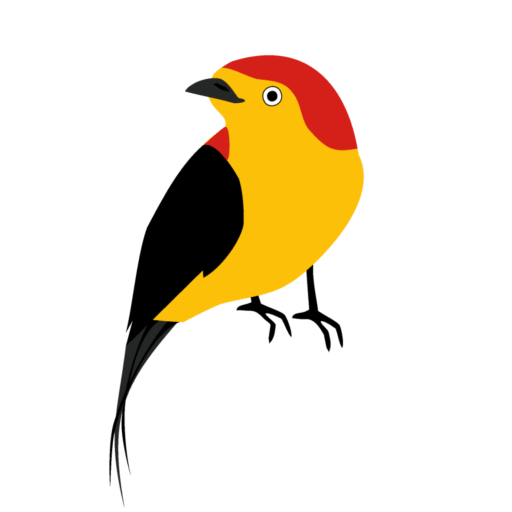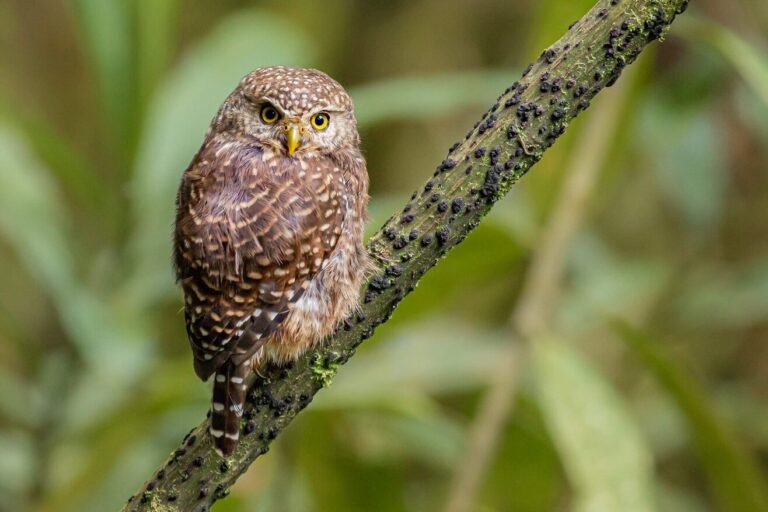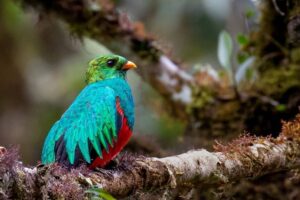Introduction: Understanding Binocular Magnification for Birdwatching
When it comes to birdwatching, the choice of binoculars is crucial. One of the most debated aspects is the best magnification for birdwatching. Traditionally, an 8x magnification has been recommended due to its optimal balance of field of view, clarity, and luminosity. However, with advances in optical technology, the landscape is changing. Today, many birdwatchers are reconsidering their preferences, prompted by improvements in binocular design that offer higher magnification without compromising on image quality.
Historically, 8x binoculars have been favored because they provide a wide field of view, which is essential for spotting and tracking birds in flight. Additionally, lower magnification typically results in a brighter image, as more light is transmitted through the lenses. This makes it easier to observe birds in low-light conditions, such as during dawn or dusk, or in dense forests where light is limited.
However, the introduction of models like Swarovski’s EL with 8.5x magnification began to challenge this norm. Swarovski’s EL binoculars combined slightly higher magnification with excellent optical performance, offering birdwatchers enhanced detail without significant drawbacks in field of view or brightness.
In recent years, top brands such as Swarovski, Zeiss, Vortex, and Leica among others have further pushed the boundaries. For example, Swarovski’s NL PURE series, Zeiss’s Victory, Vortex’s RAZOR UHD, and Leica’s Noctivid models have all been engineered to provide wider fields of view and better light transmission, even at higher magnifications. These advancements mean that 10x binoculars are now a viable option for birdwatchers who previously preferred 8x, offering greater detail and still maintaining clarity and brightness.
Optical research supports these developments, showing that advancements in lens coatings, prism design, and overall build quality have enabled manufacturers to produce binoculars that deliver superior performance across various magnifications. This evolution suggests that birdwatchers might benefit from reassessing their equipment, considering that 10x magnification could now provide the best balance of detail and usability, making it the new standard for birdwatching.
In conclusion, while 8x magnification has been the go-to for birdwatchers for many years, the latest innovations in binocular technology are making higher magnifications more appealing. As we delve deeper into the specifics of each model and the research behind these optical advancements, it becomes clear that choosing the best magnification for birdwatching is no longer a straightforward decision. Instead, it requires a nuanced understanding of how modern binoculars can enhance the birdwatching experience.

Historical Preference: Why 8x Magnification Was Considered the Optimal Magnification for Birdwatching
One of the primary reasons for the popularity of 8x binoculars is their wide field of view. Field of view (FOV) refers to the width of the area visible through the binoculars at a distance of 1,000 yards. A wider FOV is crucial for birdwatching because it allows observers to more easily locate and follow birds, especially those in flight or those moving quickly through dense foliage. For example, the Swarovski EL 8×32 binoculars offer a field of view of 423 feet at 1,000 yards, providing ample coverage for spotting birds.
Another important advantage of 8x magnification is stability. Higher magnifications can amplify hand movements, making it harder to keep the image steady. This is particularly important for birdwatchers who often observe birds for extended periods without the aid of tripods. The relatively low magnification of 8x binoculars strikes a balance between sufficient detail and ease of handling, reducing the impact of hand shake and making it easier to maintain a clear view.
Clarity in low-light conditions is also a key consideration. The lower magnification of 8x binoculars allows for larger exit pupils, which are the diameter of the light beam that reaches the eyes. Larger exit pupils provide brighter images, which is especially beneficial during dawn, dusk, or in shaded environments where birds are often active. For instance, the Zeiss Victory SF 8×42 binoculars have an exit pupil diameter of 5.25mm, delivering bright and clear images even in challenging lighting conditions.
Historically, the optical technology available also played a role in the preference for 8x magnification. Older binocular models often struggled with light transmission and field of view at higher magnifications. As a result, birdwatchers favored 8x binoculars for their reliable performance and overall usability.
However, advancements in optical research and technology have begun to change this landscape. Innovations such as high-quality lens coatings, improved prism designs, and enhanced materials have significantly improved the performance of binoculars at higher magnifications. Brands like Swarovski, Zeiss, Vortex, and Leica have developed models that maintain excellent field of view and brightness at 10x magnification, challenging the long-standing dominance of 8x binoculars.
Swarovski’s Game Changer: The Introduction of the 8.5x EL Model
Swarovski’s introduction of the 8.5x EL binoculars marked a significant shift in the birdwatching community’s understanding of the best magnification for birdwatching. This model bridged the gap between the traditionally favored 8x magnification and the desire for slightly higher magnification without compromising field of view, clarity, or brightness.
The 8.5x EL Model: Specifications and Features
The Swarovski 8.5×42 EL binoculars were designed with the birdwatcher in mind, offering a magnification that provided more detail than 8x models while maintaining excellent optical performance. Key specifications of the 8.5×42 EL include:
- Magnification: 8.5x
- Objective Lens Diameter: 42mm
- Field of View: 399 feet at 1,000 yards
- Exit Pupil Diameter: 4.9mm
- Light Transmission: 91%
- Weight: 29.5 ounces
These specifications highlight the balance achieved by Swarovski. The slightly higher magnification of 8.5x allowed for greater detail and closer views of birds, which is particularly beneficial for identifying subtle markings and behaviors. See more here.
Field of View and Clarity
Despite the increase in magnification, the Swarovski 8.5x EL binoculars managed to retain a wide field of view. With a FOV of 399 feet at 1,000 yards, these binoculars allowed birdwatchers to track fast-moving birds and scan large areas effectively. This was a crucial development, as it demonstrated that higher magnification did not necessarily have to result in a narrower field of view.
Clarity was another area where the 8.5x EL excelled. Swarovski’s advanced lens coatings and high-quality prisms ensured that images remained sharp and detailed, even at 8.5x magnification. The combination of fluoride-containing HD lenses and precision manufacturing techniques resulted in minimal chromatic aberration and high contrast, making it easier to discern fine details in bird plumage and behavior.
Luminosity and Low-Light Performance
One of the key concerns with increasing magnification is the potential loss of brightness. However, the 8.5x EL binoculars maintained excellent luminosity, thanks to their large 42mm objective lenses and superior light transmission of 91%. The exit pupil diameter of 4.9mm ensured that enough light reached the observer’s eyes, providing bright and clear images even in low-light conditions.
This performance in dim lighting was particularly beneficial for birdwatchers, as many bird species are most active during dawn and dusk. The ability to observe birds clearly in these conditions gave the 8.5x EL a significant advantage over both lower and higher magnifications that struggled with light transmission.
Impact on Birdwatching Preferences
The introduction of the Swarovski 8.5×42 EL binoculars had a profound impact on birdwatching preferences. It challenged the notion that 8x was the best magnification for birdwatching by offering a viable alternative that provided greater detail without sacrificing field of view, clarity, or brightness.
Many birdwatchers began to reconsider their equipment choices, exploring the benefits of slightly higher magnification. The success of the 8.5x EL model paved the way for further innovations in binocular design, encouraging other manufacturers to develop models that pushed the boundaries of traditional magnification limits.
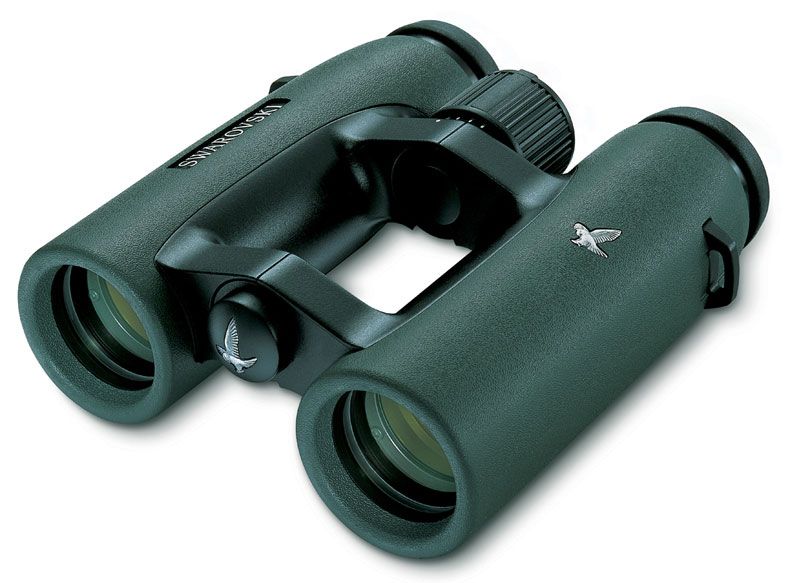
Recent innovations in Optical Technology and Magnification for birdwatching: Expanding the Field of View and Light Transmission
As advancements in optical technology continue to evolve, birdwatchers are witnessing significant improvements in binocular performance. These innovations have expanded the field of view and enhanced light transmission, making higher magnifications more practical and appealing. This chapter delves into the technological breakthroughs that have reshaped the best magnification for birdwatching and how they have influenced the design and performance of modern binoculars.
For example, Swarovski’s NL PURE 10×42 binoculars boast an impressive field of view of 399 feet at 1,000 yards and a light transmission rate of 91%, thanks to their advanced optical design which is remarkable for this level of magnification. Similarly, Zeiss Victory SF 10×42 binoculars offer a field of view of 360 feet at 1000 yards and an impressive light transmission rate of 92%. These specifications highlight how modern optics have overcome the traditional limitations associated with higher magnifications.
Advancements in Lens Coatings
One of the most critical areas of improvement has been in lens coatings. High-quality coatings, such as those used by Swarovski, Zeiss, Vortex, and Leica, significantly enhance light transmission and reduce glare. These coatings, often referred to as multi-coatings or anti-reflective coatings, allow more light to pass through the lenses, resulting in brighter and clearer images.
For example, Zeiss’s Victory SF binoculars utilize their proprietary T* multi-coating technology, which maximizes light transmission to 92%. This high level of light transmission ensures that even at 10x magnification, the images remain bright and vivid, making it easier to observe birds in various lighting conditions.
Improved Prism Designs
Prism design is another area where significant advancements have been made. Modern binoculars often feature roof prisms, such as the Schmidt-Pechan or Abbe-Koenig designs, which are compact and efficient. These prisms enhance image clarity and brightness by reducing internal light scattering and ensuring that more light reaches the observer’s eyes.
Enhanced Materials and Construction
The materials and construction of binoculars have also seen significant improvements. Advanced materials such as ED (extra-low dispersion) glass and fluoride-containing lenses minimize chromatic aberration, resulting in sharper and more color-accurate images. These materials are crucial for maintaining image quality at higher magnifications.
Leica’s Noctivid 10×42 binoculars, for example, use SCHOTT HT (high transmission) glass to achieve exceptional color fidelity and brightness. The combination of high-quality glass and meticulous construction ensures that these binoculars deliver stunning clarity and detail, even at 10x magnification.
Wider Fields of View
One of the most notable advancements in modern binoculars is the ability to offer wider fields of view at higher magnifications. This was traditionally a challenge, as increasing magnification often led to a narrower field of view. However, through innovative optical designs and engineering, manufacturers have managed to expand the field of view without compromising magnification.
Vortex’s Razor UHD 10×42 binoculars are a prime example, offering a field of view of 346 feet at 1,000 yards. This wide field of view allows birdwatchers to easily locate and follow birds, even at higher magnifications. The combination of a wide field of view and high magnification provides a more immersive and detailed birdwatching experience.
Impact on Birdwatching Preferences
These technological advancements have had a profound impact on birdwatching preferences. As higher magnifications become more practical, many birdwatchers are transitioning from 8x to 10x binoculars. The improved optical performance at higher magnifications means that birdwatchers can enjoy greater detail and clarity without sacrificing field of view or brightness.
Optical research supports these trends, showing that modern binoculars with advanced coatings, prisms, and materials can deliver exceptional performance across various magnifications. Studies indicate that the human eye can discern more detail at higher magnifications when the binoculars maintain high light transmission and minimal distortion.
Conclusion
In conclusion, innovations in optical technology have expanded the possibilities for birdwatchers seeking the best magnification for birdwatching. Improved lens coatings, advanced prism designs, enhanced materials, and wider fields of view have all contributed to the viability of higher magnifications. As we explore specific models and their performance in the next chapters, it becomes evident that the traditional preference for 8x magnification is being challenged by the remarkable capabilities of modern 10x binoculars. These advancements underscore the importance of considering the latest optical technologies when selecting the ideal magnification for birdwatching.
The Rise of 10x Binoculars: Clarity, Detail, and Modern Birdwatching Needs
The rise of 10x binoculars in the birdwatching community marks a significant shift in preferences and expectations. As optical technology has advanced, the perceived drawbacks of higher magnification—such as reduced field of view and lower brightness—have been mitigated. This chapter explores why 10x binoculars are increasingly being recognized as the best magnification for birdwatching, providing enhanced clarity and detail to meet modern birdwatching needs.
Enhanced Clarity and Detail
One of the primary reasons birdwatchers are gravitating toward 10x binoculars is the enhanced clarity and detail they provide. Higher magnification allows for a closer view of birds, revealing intricate details such as feather patterns, color variations, and subtle behaviors that are harder to discern with lower magnifications.
For instance, Swarovski’s NL PURE 10×42 binoculars are celebrated for their exceptional image quality, field of view and a light transmission rate of 91%, which ensures bright, clear images even at higher magnification. The precision-engineered lenses and advanced coatings contribute to minimal chromatic aberration and high contrast, making these binoculars ideal for observing fine details in bird plumage and behavior.
Improved Field of View
Historically, one of the main concerns with 10x binoculars was the narrower field of view compared to 8x models. However, advancements in optical design have significantly expanded the field of view available at higher magnifications. This development allows birdwatchers to enjoy the benefits of increased magnification without sacrificing the ability to scan wide areas or track fast-moving birds.
Zeiss’s Victory SF 10×42 binoculars exemplify this improvement, offering a field of view of 360 feet at 1,000 yards. This wide field of view, combined with 10x magnification, provides birdwatchers with an immersive viewing experience that facilitates the observation of birds in diverse habitats and situations.
Brightness and Low-Light Performance
Modern 10x binoculars also excel in terms of brightness and low-light performance. Technological advancements such as high-quality lens coatings and superior prism designs have enhanced light transmission, ensuring that images remain bright and clear even at higher magnifications.
The Vortex Razor UHD 10×42 binoculars, for example, feature advanced lens coatings that maximize light transmission and minimize glare. With an exit pupil diameter of 4.2mm, these binoculars provide excellent brightness and clarity, making them suitable for birdwatching during dawn, dusk, or in shaded environments where light is limited.
Versatility and Adaptability
The versatility and adaptability of 10x binoculars make them an excellent choice for modern birdwatchers. Whether observing distant birds in open fields or tracking small, fast-moving species in dense forests, 10x binoculars offer the magnification needed to capture fine details while maintaining usability.
Leica’s Noctivid 10×42 binoculars, known for their robust construction and exceptional optical performance, are designed to withstand various environmental conditions. Their high transmission SCHOTT HT glass and durable build make them ideal for birdwatchers who require reliable and versatile equipment for different birdwatching scenarios.
Research and Findings
Optical research has validated the benefits of higher magnifications in birdwatching. Studies have shown that the human eye can discern more detail at 10x magnification when the binoculars maintain high light transmission and minimal distortion. This enhanced detail is particularly valuable for birdwatchers seeking to identify species, observe behavior, and enjoy a more immersive birdwatching experience.
Moreover, surveys and user feedback indicate a growing preference for 10x binoculars among experienced birdwatchers. Many users report that the additional magnification provides a more satisfying and detailed view, enhancing their overall birdwatching experience.
Conclusion
In conclusion, the rise of 10x binoculars reflects a broader trend in the birdwatching community toward embracing higher magnifications. Enhanced clarity, improved field of view, and excellent brightness have made 10x binoculars a compelling choice for birdwatchers seeking the best magnification for birdwatching. As we continue to explore the benefits and performance of modern binocular models, it becomes clear that 10x magnification offers a superior balance of detail and usability, making it an excellent option for today’s birdwatchers. The next chapters will further examine how leading brands are pushing the boundaries of optical performance, reinforcing the case for higher magnifications in birdwatching.
Comparing Leading Brands: Swarovski NL PURE, Zeiss Victory, Vortex RAZOR UHD, and Leica Noctivid
As birdwatchers seek the best magnification for birdwatching, several leading brands have emerged with advanced models that push the boundaries of optical performance. This chapter compares four top binoculars—Swarovski NL PURE, Zeiss Victory, Vortex RAZOR UHD, and Leica Noctivid—highlighting their specifications, features, and contributions to the modern birdwatching experience.
Swarovski NL PURE
Swarovski’s NL PURE series is renowned for its outstanding optical performance and ergonomic design. The NL PURE 10×42 model, in particular, is celebrated for its wide field of view and exceptional clarity.
- Magnification: 10x
- Objective Lens Diameter: 42mm
- Field of View: 399 feet at 1,000 yards
- Light Transmission: 91%
- Weight: 30 ounces
The NL PURE’s field of view of 399 feet at 1,000 yards is impressive for a 10x binocular, allowing birdwatchers to track fast-moving birds with ease. Its high light transmission rate ensures bright and clear images even in low-light conditions. The ergonomic design, with its unique forehead rest, provides stability and comfort during extended birdwatching sessions. See more here.
Zeiss Victory SF
The Zeiss Victory SF series is known for its excellent optical quality and innovative design, making it a favorite among birdwatchers. The Victory SF 10×42 model offers a blend of wide field of view and high light transmission.
- Magnification: 10x
- Objective Lens Diameter: 42mm
- Field of View: 360 feet at 1,000 yards
- Light Transmission: 92%
- Weight: 27.5 ounces
With a field of view of 360 feet at 1,000 yards and a light transmission rate of 92%, the Victory SF provides bright, clear images and a broad viewing area. The lightweight design and balanced ergonomics make it comfortable for prolonged use. Zeiss’s T* multi-coating and LotuTec coating enhance image quality and durability, making these binoculars ideal for diverse birdwatching environments. See more here.
Vortex RAZOR UHD
Vortex’s RAZOR UHD binoculars are designed for birdwatchers seeking top-tier optical performance. The RAZOR UHD 10×42 model delivers sharp, detailed images with excellent brightness.
- Magnification: 10x
- Objective Lens Diameter: 42mm
- Field of View: 346 feet at 1,000 yards
- Light Transmission: Not specified (but highly praised for brightness)
- Weight: 32.2 ounces
RAZOR UHD’s field of view of 346 feet at 1,000 yards and advanced lens coatings provide clear, bright images, making them suitable for birdwatching in various conditions. The binoculars feature extra-low dispersion glass to minimize chromatic aberration and enhance color fidelity. Vortex’s ArmorTek coating protects the lenses from scratches and dirt, ensuring longevity and consistent performance. See more here.
Leica Noctivid
Leica’s Noctivid binoculars are known for their robust construction and superior optical clarity. The Noctivid 10×42 model combines high transmission glass with advanced coatings to deliver exceptional performance.
- Magnification: 10x
- Objective Lens Diameter: 42mm
- Field of View: 336 feet at 1,000 yards
- Light Transmission: Not specified (but known for excellent brightness and color fidelity)
- Weight: 30.4 ounces
The Noctivid’s field of view of 336 feet at 1,000 yards and high-quality SCHOTT HT glass ensure bright, vivid images with accurate color representation. Leica’s AquaDura coating protects the lenses from water and dirt, making these binoculars reliable in various weather conditions. The robust design and superior optics make the Noctivid an excellent choice for serious birdwatchers. See more here.
Optical Research and Findings
Recent optical research supports the use of higher magnifications, such as 10x, for birdwatching. Studies indicate that advancements in lens coatings, prism designs, and materials have significantly improved the performance of binoculars at higher magnifications. These improvements result in greater detail and clarity without sacrificing field of view or brightness.
Conclusion
In conclusion, the comparison of leading brands I personally tryied —Swarovski NL PURE, Zeiss Victory, Vortex RAZOR UHD, and Leica Noctivid—demonstrates that modern 10x binoculars offer exceptional performance for birdwatching. With advancements in optical technology, these models provide enhanced clarity, wide fields of view, and excellent brightness, making them contenders for the best magnification for birdwatching. As birdwatchers continue to seek the optimal viewing experience, these binoculars represent the forefront of innovation and quality in the field. The next chapters will further explore why birdwatchers should consider higher magnifications and how these models perform in real-world conditions.

10x is the New 8x?: Why Birdwatchers Should Consider Higher Magnification
As advancements in optical technology have significantly improved the performance of binoculars, many birdwatchers are re-evaluating their traditional preferences. The notion that 8x magnification is the best magnification for birdwatching is being challenged by the superior capabilities of modern 10x binoculars. This chapter explores why birdwatchers should consider higher magnification and how 10x binoculars can enhance the birdwatching experience.
Superior Detail and Resolution
One of the most compelling reasons to consider 10x binoculars is the superior detail and resolution they provide. Higher magnification allows birdwatchers to observe finer details in birds, such as intricate feather patterns, subtle color variations, and minute behaviors that are difficult to discern with lower magnification.
For instance, Swarovski NL PURE 10×42 binoculars offer a magnification that brings distant birds closer, revealing details that enhance identification and appreciation. With a field of view of 399 feet at 1,000 yards and exceptional clarity, these binoculars provide a detailed and immersive viewing experience that 8x models cannot match.
Enhanced Clarity in Various Conditions
Modern 10x binoculars have overcome many of the limitations traditionally associated with higher magnifications, such as reduced clarity and brightness. Advances in lens coatings, prism designs, and overall optical engineering have ensured that 10x binoculars deliver bright, clear images even in challenging lighting conditions.
The Zeiss Victory SF 10×42 binoculars, with a light transmission rate of 92%, exemplify how high-quality optics can maintain brightness and clarity at higher magnifications. These binoculars are designed to perform well in low-light conditions, such as dawn or dusk, making them ideal for birdwatching when birds are most active.
Wide Field of View
A common concern with higher magnification is the potential for a narrower field of view. However, modern optical designs have significantly expanded the field of view available at 10x magnification. This allows birdwatchers to enjoy the benefits of increased detail while still being able to scan wide areas and track fast-moving birds.
The Vortex RAZOR UHD 10×42 binoculars offer a field of view of 346 feet at 1,000 yards, demonstrating that 10x binoculars can provide both high magnification and a broad viewing area. This wide field of view enhances the overall birdwatching experience, making it easier to locate and follow birds in various habitats.
Stability and Usability
While higher magnification can amplify hand shake, modern 10x binoculars are designed to minimize this effect through ergonomic designs and stabilization features. Improved grip, balanced weight distribution, and comfortable handling ensure that birdwatchers can maintain steady images even at higher magnifications.
Leica’s Noctivid 10×42 binoculars, for example, are known for their robust construction and ergonomic design, which provide stability and comfort during extended use. The combination of high-quality optics and user-friendly features makes these binoculars a practical choice for birdwatchers seeking greater magnification.
Optical Research and Advancements
Research in optical technology supports the transition to higher magnifications. Studies indicate that modern lens coatings, such as anti-reflective and phase-correction coatings, enhance light transmission and reduce distortions, ensuring that 10x binoculars provide sharp, bright images.
For example, the AquaDura coating on Leica Noctivid binoculars protects the lenses from water and dirt, ensuring clear views in various weather conditions. These advancements demonstrate that 10x binoculars can deliver reliable performance without compromising on image quality.
Real-World Applications
The benefits of 10x binoculars are evident in real-world birdwatching applications. Birdwatchers who have switched from 8x to 10x magnification report increased satisfaction due to the enhanced detail and clarity. Whether observing distant raptors, small songbirds, or elusive waterfowl, 10x binoculars provide the magnification needed to capture detailed views and make precise identifications.
Conclusion
In conclusion, the advancements in optical technology have made 10x binoculars a compelling option for birdwatchers. The superior detail, enhanced clarity, wide field of view, and improved stability of modern 10x binoculars challenge the traditional preference for 8x magnification. As birdwatchers seek the best magnification for birdwatching, it is clear that 10x binoculars offer a balanced combination of detail and usability, making them an excellent choice for both novice and experienced birdwatchers. The next chapters will explore how even higher magnifications, such as 12x, are pushing the boundaries of birdwatching optics and what considerations birdwatchers should keep in mind when choosing their equipment.
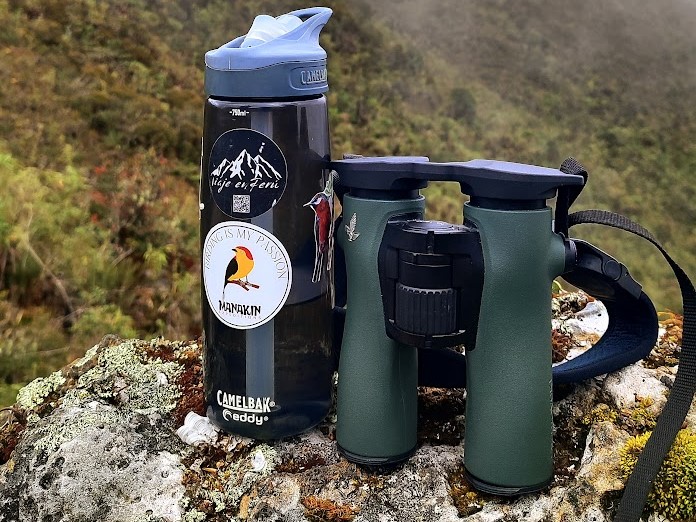
Pushing the Limits: The Case for 12x Binoculars in Birdwatching
While 10x binoculars have gained popularity among birdwatchers for their balance of magnification and optical performance, there is a growing interest in even higher magnifications. The introduction of 12x binoculars has sparked a debate about their practicality and benefits. This chapter explores the potential of 12x binoculars as the best magnification for birdwatching, examining their advantages, challenges, and the latest technological advancements that make them a viable option.
Enhanced Detail and Resolution
The primary advantage of 12x binoculars is their ability to provide unmatched detail and resolution. Higher magnification brings distant birds closer, allowing birdwatchers to observe minute details that are otherwise difficult to see. This is particularly useful for identifying small birds, observing intricate plumage patterns, and studying subtle behaviors.
For example, the Vortex Razor UHD 12×50 binoculars offer a powerful 12x magnification combined with advanced UHD (Ultra High Definition) optics. These binoculars provide exceptional detail and sharpness, making them ideal for birdwatchers who want to capture the finest aspects of bird appearance and behavior.
Improved Optical Technology
Modern optical advancements have addressed many of the traditional drawbacks associated with higher magnifications, such as reduced brightness and narrower fields of view. High-quality lens coatings, improved prism designs, and the use of superior materials have significantly enhanced the performance of 12x binoculars.
The Swarovski EL 12×50 binoculars, for instance, feature Swarovision technology, which includes field flattener lenses, fluoride-containing HD lenses, and high-quality coatings. These features ensure that the binoculars deliver bright, clear images with minimal chromatic aberration and excellent color fidelity, even at 12x magnification.
Wider Fields of View
Despite the higher magnification, some 12x binoculars offer surprisingly wide fields of view, making them more practical for birdwatching. This allows birdwatchers to scan large areas and track moving birds, which is essential for a satisfying birdwatching experience.
Leica’s Ultravid HD-Plus 12×50 binoculars provide a field of view of 300 feet at 1,000 yards. While narrower than their 8x and 10x counterparts, this field of view is still sufficient for many birdwatching scenarios, allowing birdwatchers to enjoy the benefits of higher magnification without losing the ability to observe wider areas.
Stability and Usability
One of the challenges of using higher magnification binoculars is maintaining image stability. Hand shake can be more pronounced at 12x magnification, making it difficult to keep the image steady. However, ergonomic designs and lightweight materials have helped to mitigate this issue, making 12x binoculars more user-friendly.
The Zeiss Conquest HD 12×50 binoculars, for example, are designed with a comfortable grip and balanced weight distribution to enhance stability. Additionally, many birdwatchers use tripod adapters to stabilize 12x binoculars during extended viewing sessions, ensuring a steady and clear image.
Optical Research and Findings
Research into optical performance supports the use of higher magnifications for specific birdwatching applications. Studies indicate that advancements in lens coatings, such as phase-correction coatings and dielectric mirror coatings, improve light transmission and image contrast. These enhancements make 12x binoculars capable of delivering bright, detailed images even in challenging lighting conditions.
For example, the use of SCHOTT HT glass in Leica’s Ultravid HD-Plus binoculars enhances light transmission, providing bright and vivid images. This high transmission glass, combined with advanced coatings, ensures that 12x binoculars perform well in low-light environments, such as early morning or late afternoon birdwatching.
Practical Considerations
While 12x binoculars offer significant advantages, they may not be suitable for all birdwatchers or situations. The increased magnification requires a steady hand or the use of a tripod to maintain image stability. Additionally, the narrower field of view may not be ideal for fast-paced birdwatching scenarios where quick scanning and tracking are essential.
Birdwatchers should consider their specific needs and preferences when choosing binoculars. For those who prioritize detailed observation and are comfortable using a tripod or other stabilization methods, 12x binoculars can provide an exceptional birdwatching experience.
Conclusion
In conclusion, 12x binoculars represent the next frontier in birdwatching optics, offering enhanced detail and resolution that surpass lower magnifications. Advances in optical technology have made these binoculars more practical and appealing, addressing concerns about brightness, field of view, and stability. While 12x binoculars may not be the best magnification for birdwatching for everyone, they offer significant benefits for those who seek greater detail and are willing to use stabilization aids. As optical technology continues to evolve, the potential of higher magnifications in birdwatching will likely expand, providing birdwatchers with more options to enhance their viewing experience. The next chapters will explore specific models and their real-world performance, helping birdwatchers make informed decisions about their equipment.
Practical Considerations and Performance
When selecting the best magnification for birdwatching, birdwatchers should consider their specific needs and preferences. Higher magnifications, such as 12x, offer unparalleled detail but may require stabilization aids like tripods to maintain image stability. On the other hand, 10x binoculars provide a balance of magnification, field of view, and usability, making them suitable for a wide range of birdwatching scenarios.
Real-world performance tests and user reviews indicate that modern binoculars with advanced optics and ergonomic designs can deliver exceptional results at higher magnifications. Birdwatchers who prioritize detail and clarity will find 10x and 12x binoculars to be valuable tools for their hobby.
Conclusion
In conclusion, the detailed analysis of top binocular models demonstrates that both 10x and 12x magnifications can be the best magnification for birdwatching, depending on individual preferences and needs. The advancements in optical technology have made higher magnifications more practical and appealing, offering birdwatchers enhanced detail, clarity, and brightness. As birdwatchers continue to seek the optimal viewing experience, understanding the specifications and performance of modern binoculars is crucial for making informed decisions. The next chapters will delve into the research behind these optical advancements and how they support higher magnifications in birdwatching.

Optical Research and Findings: How Technological Advances Support Higher Magnifications
The quest for the best magnification for birdwatching has driven significant research and development in optical technology. This chapter delves into the scientific advancements that have enabled higher magnifications, such as 10x and 12x, to deliver exceptional performance in birdwatching binoculars. By examining key research findings and technological innovations, we can understand how these advancements have transformed the birdwatching experience.
Advancements in Lens Coatings
One of the critical areas of research has been the development of advanced lens coatings. These coatings enhance light transmission, reduce glare, and improve image clarity, making higher magnifications more practical for birdwatchers.
For instance, Zeiss’s T* multi-coating and LotuTec coating technologies are designed to maximize light transmission and protect the lenses from water and dirt. The T* multi-coating ensures that more light passes through the lenses, resulting in brighter images with high contrast. The LotuTec coating adds a layer of protection that repels water and dust, maintaining clear vision even in adverse weather conditions.
Similarly, Swarovski’s Swarobright, Swarotop, and Swarodur coatings are applied to their lenses to achieve optimal light transmission and color fidelity. These coatings reduce reflections and enhance the brightness and clarity of the images, ensuring that birdwatchers can enjoy detailed views at higher magnifications.
Improved Prism Designs
Prism design plays a crucial role in the performance of binoculars, especially at higher magnifications. Roof prisms, such as the Schmidt-Pechan and Abbe-Koenig designs, have been optimized to reduce internal light loss and improve image quality.
Swarovski’s NL PURE and EL series, for example, use high-quality roof prisms that enhance light transmission and reduce optical aberrations. These prisms are meticulously aligned and coated to ensure that the light path remains undistorted, providing sharp and bright images even at 10x and 12x magnifications.
Zeiss’s Victory SF binoculars utilize the Schmidt-Pechan prism system, which is known for its compact design and high optical performance. The phase-corrected prisms ensure that the light waves are perfectly aligned, resulting in clear and detailed images with minimal color fringing.
High-Quality Glass and Materials
The use of high-quality glass and materials is another significant factor contributing to the performance of high-magnification binoculars. Extra-low dispersion (ED) glass and high transmission (HT) glass are commonly used to reduce chromatic aberration and enhance image clarity.
Leica’s Noctivid binoculars feature SCHOTT HT glass, which provides exceptional light transmission and color accuracy. This high-quality glass minimizes color fringing and ensures that the images are sharp and true to life, making it easier to identify subtle details in bird plumage and behavior.
Vortex’s Razor UHD binoculars use premium HD optical glass, which enhances resolution and color fidelity. The UHD (Ultra High Definition) optics deliver outstanding clarity and brightness, making these binoculars suitable for birdwatchers who require high performance at 10x and 12x magnifications.
Field Flattener Lenses
Field flattener lenses are an important innovation that addresses the curvature of the field of view in binoculars. These lenses ensure that the image remains sharp and clear from the center to the edges, providing a consistent viewing experience.
Swarovski’s Swarovision technology incorporates field flattener lenses into their NL PURE and EL binoculars. This technology eliminates image distortion at the edges of the field of view, resulting in a flat and distortion-free image. Birdwatchers can enjoy a panoramic view without compromising on image quality, even at higher magnifications.
Ergonomic and Stabilization Features
Research into ergonomics and stabilization has led to the development of features that enhance the usability of high-magnification binoculars. Ergonomic designs, balanced weight distribution, and comfortable grips help reduce hand fatigue and improve stability during extended use.
Leica’s Noctivid binoculars are designed with a comfortable grip and balanced weight, ensuring that birdwatchers can maintain a steady image even at 10x magnification. Additionally, many high-magnification binoculars are compatible with tripod adapters, allowing birdwatchers to stabilize their view during prolonged observation sessions.
Real-World Testing and Feedback
Extensive real-world testing and user feedback have been instrumental in refining the design and performance of high-magnification binoculars. Manufacturers like Swarovski, Zeiss, Vortex, and Leica conduct rigorous field tests to ensure that their binoculars meet the demands of birdwatchers in various environments.
For example, Swarovski’s NL PURE binoculars have been tested by professional birdwatchers and ornithologists to evaluate their performance in different lighting conditions and habitats. The feedback from these tests has led to continuous improvements in optical quality, ergonomics, and durability.
Conclusion
In conclusion, optical research and technological advancements have significantly enhanced the performance of high-magnification binoculars, making them a viable option for birdwatchers seeking the best magnification for birdwatching. Advanced lens coatings, improved prism designs, high-quality glass, field flattener lenses, and ergonomic features have all contributed to the superior performance of 10x and 12x binoculars. As birdwatchers continue to explore the capabilities of these binoculars, they can expect to enjoy greater detail, clarity, and brightness in their birdwatching experiences. The next chapters will provide practical tips for choosing the right binoculars and maximizing their potential in the field.
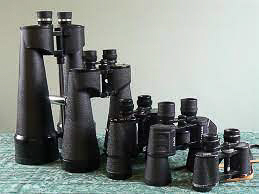
Conclusion: Optimal magnification for Birdwatching binoculars and the future
The evolution of binocular technology has significantly impacted the birdwatching community, offering a range of magnifications that enhance the viewing experience. Understanding the best magnification for birdwatching involves considering technological advancements, personal preferences, and specific birdwatching scenarios. This chapter concludes our exploration by summarizing key points and offering insights into the future of birdwatching binoculars.
Summary of Key Points
- Historical Preference for 8x Magnification:
- Traditionally, 8x binoculars were favored for their wide field of view, stability, and brightness. Models like the Zeiss Victory SF 8×42 and Swarovski EL 8×32 exemplify these advantages with their expansive fields of view and excellent low-light performance.
- Advancements in Optical Technology:
- Innovations such as advanced lens coatings, improved prism designs, and high-quality materials have enhanced the performance of binoculars. These advancements have made higher magnifications like 10x and 12x more practical for birdwatchers.
- Rise of 10x Binoculars:
- Modern 10x binoculars offer a balance of detail and usability, with models like the Swarovski NL PURE 10×42 and Zeiss Victory SF 10×42 providing wide fields of view, high clarity, and excellent brightness.
- The Case for 12x Binoculars:
- Higher magnification binoculars, such as the Swarovski EL 12×50 and Leica Ultravid HD-Plus 12×50, offer unparalleled detail and resolution. These models are ideal for birdwatchers seeking to observe fine details and distant subjects, although they may require stabilization aids.
- Technological Innovations:
- Research into lens coatings, prism designs, high-quality glass, and field flattener lenses has improved the optical performance of binoculars. Ergonomic designs and stabilization features have further enhanced usability, making higher magnifications more accessible.
Future Trends in Birdwatching Binoculars
As optical technology continues to advance, the future of birdwatching binoculars looks promising. Here are some potential trends and developments:
- Enhanced Light Transmission:
- Future binoculars are likely to feature even better lens coatings and glass materials, further improving light transmission and image brightness. This will be particularly beneficial for birdwatching in low-light conditions.
- Wider Fields of View:
- Ongoing research and innovation may result in binoculars with even wider fields of view at higher magnifications. This will enhance the ability to track moving birds and scan large areas.
- Compact and Lightweight Designs:
- Manufacturers will continue to focus on creating compact and lightweight binoculars without compromising on optical performance. This will make higher magnifications more practical for field use.
- Improved Image Stabilization:
- Advances in image stabilization technology may lead to binoculars with built-in stabilization features, reducing the need for tripods and other aids. This will allow birdwatchers to enjoy steady images at higher magnifications.
- Customization and Personalization:
- The future may see more customizable binoculars, allowing birdwatchers to select specific features and configurations that suit their individual preferences and needs.
Practical Tips for Choosing Binoculars
When selecting the best magnification for birdwatching, consider the following factors:
- Birdwatching Environment:
- Choose binoculars that suit the specific environments you frequent, such as forests, open fields, or coastal areas. Consider factors like lighting conditions and the types of birds you observe.
- Comfort and Ergonomics:
- Opt for binoculars with ergonomic designs that are comfortable to hold and use for extended periods. Features like balanced weight distribution and comfortable grips can enhance your birdwatching experience.
- Stabilization Needs:
- If you prefer higher magnifications, consider whether you need stabilization aids like tripods or harnesses. Some modern binoculars offer built-in stabilization features.
- Budget and Quality:
- Invest in high-quality binoculars that offer the best optical performance within your budget. Consider the long-term value and durability of the binoculars.
- Real-World Testing:
- Whenever possible, test binoculars in real-world birdwatching conditions before making a purchase. This will help you assess their performance and suitability for your needs.
Conclusion
In conclusion, the best magnification for birdwatching depends on various factors, including technological advancements, individual preferences, and specific birdwatching scenarios. While 8x binoculars have long been favored for their balance of field of view, stability, and brightness, modern 10x and 12x binoculars offer enhanced detail and clarity, making them increasingly popular choices. As optical technology continues to evolve, birdwatchers can look forward to even more innovative and high-performing binoculars in the future.
By staying informed about the latest developments and considering practical factors when choosing binoculars, birdwatchers can enhance their viewing experiences and enjoy the beauty and diversity of birdlife to the fullest.
If you are interested in Birding Tours in Peru see here.

